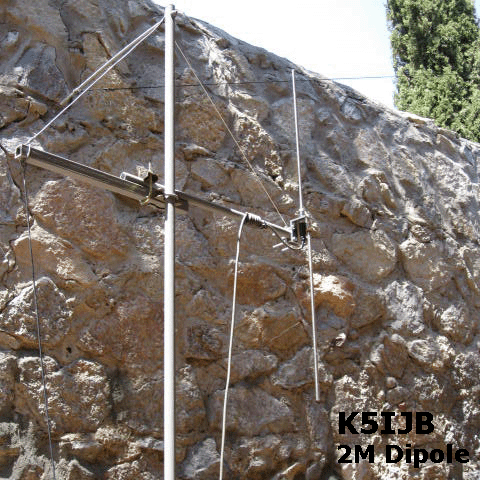|
This antenna project was inspired by Richard Frazier - W7LPN. Richard suggested an air-wound balun at the feedpoint to minimize RF along the feedline. A 2-foot section of PVC painted gray along with various junk-box antenna parts were used in the construction. The antenna was mounted at a height of 8 feet on an HF dipole support pole between the house and rock wall. Nylon string was needed for support to keep the 1/2-inch PVC from possibly bending under the weight of the antenna. The top section of the vertical consists of a 3/8-inch rod 19.5 inches long, with the bottom section also consisting of a 3/8-inch rod 19.5 inches long. SWR is fairly flat across the 2-meter band showing 1.5:1 at 144 Mhz and 1.4:1 at 148 Mhz. The air-wound balun was wound on the 1/2-inch PVC horizontal mast using 6 turns of RG-8X coax. Plastic cable ties were used to secure each end of the balun to the PVC pipe. Performance is exceptional. Two repeaters in the New Mexico MegaLink system can be accessed from a distance of 100+ miles. The two El Paso MegaLink repeaters are easily accessed using 5 watts from a distance of only 5-10 miles. The Caballo, New Mexico MegaLink repeater can be accessed using 5 watts from a distance of 100 miles, while the Little Floridas repeater in Deming, New Mexico can only be accessed with 25 watts from a distance of 106 miles. The vertical dipole works well for repeater operation, even when mounted at 8 feet. A 5/8-wave ground plane was previously used but provided too much receive gain for the older Yaesu 2400H 2-meter FM transceiver.
|





